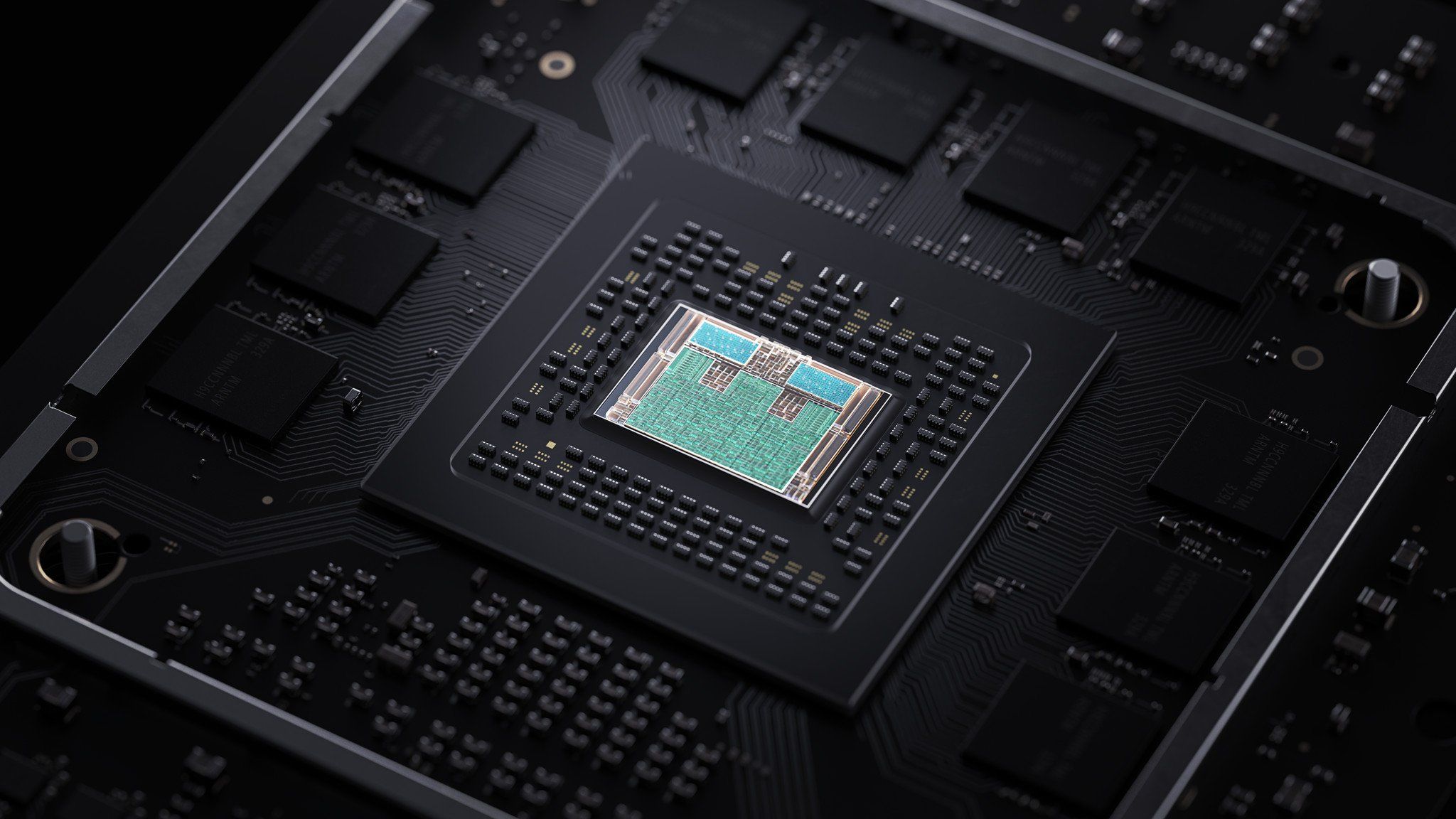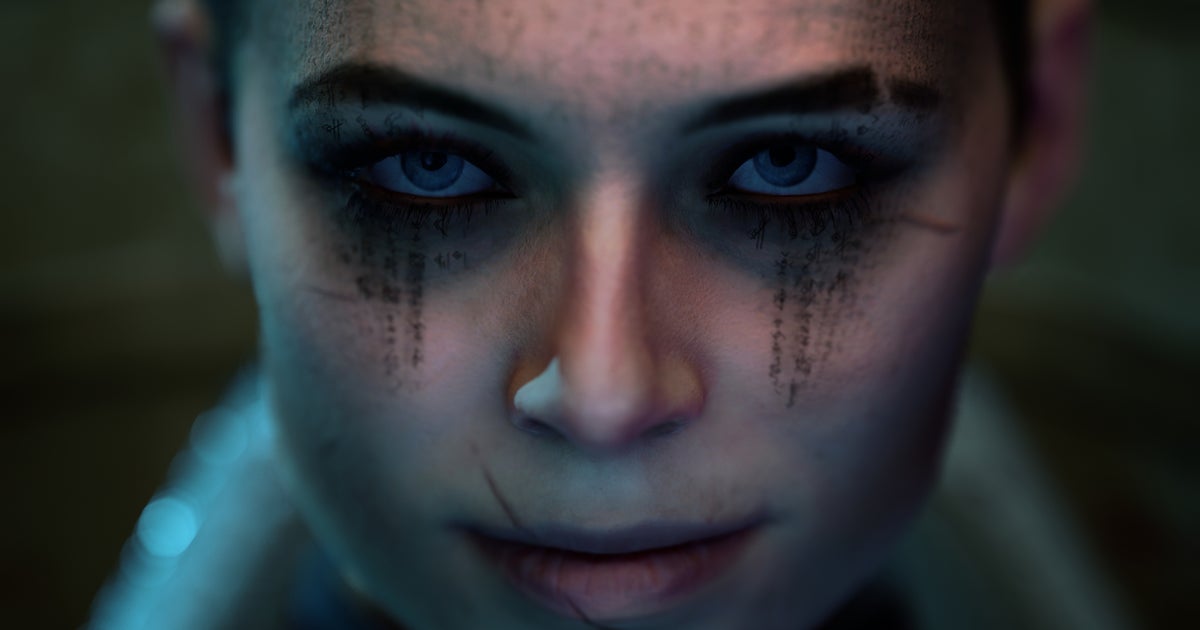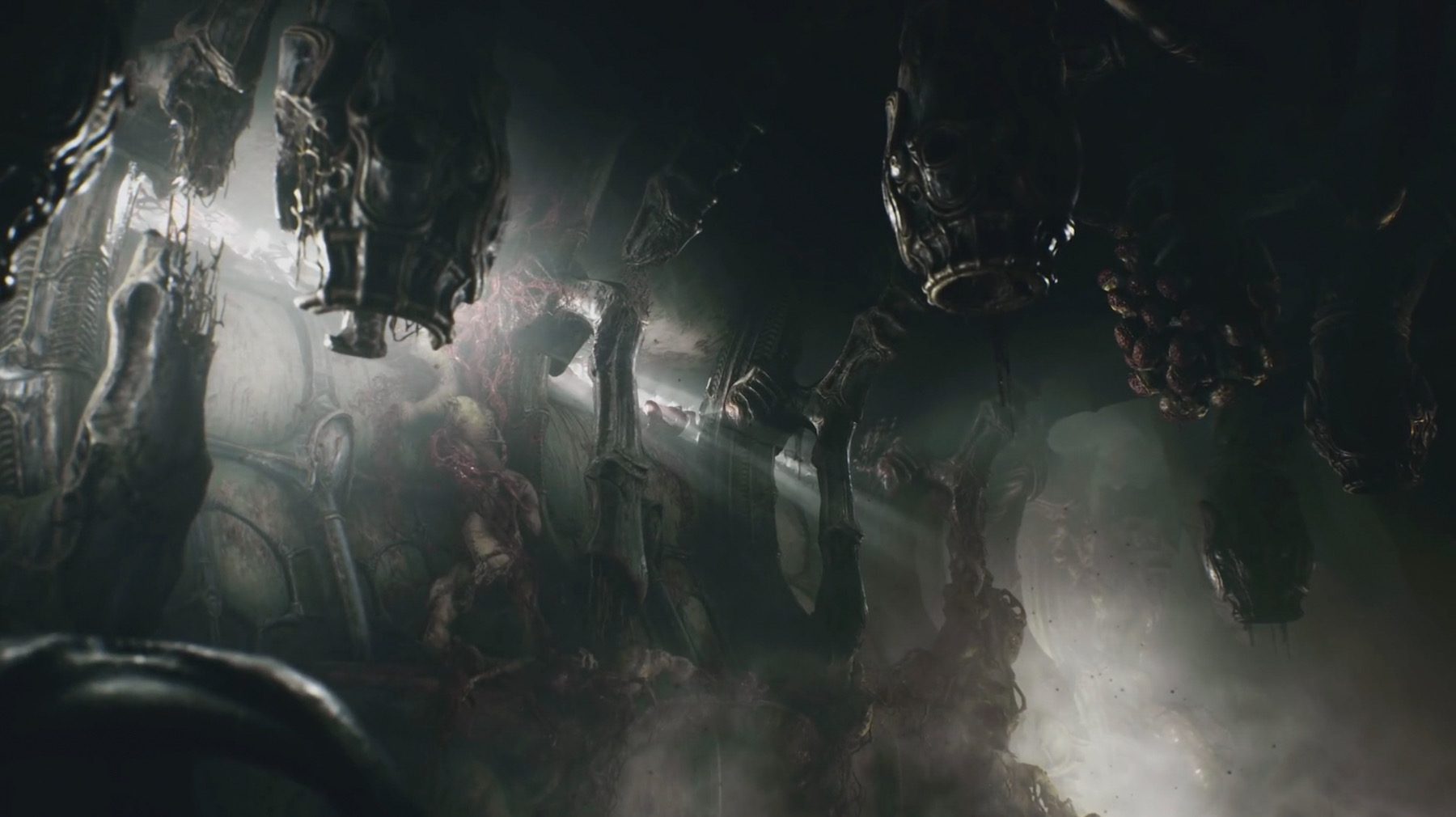Ar¢tos
Member
Because clocks mean nothing naturally, the more CUs the better, even if they were clocked at 800mhz.Perhaps you could show how you arrive at this conclusion....
Because clocks mean nothing naturally, the more CUs the better, even if they were clocked at 800mhz.Perhaps you could show how you arrive at this conclusion....
I still think the performance difference will lean more towards the CUs number more the th TF number deference
She is actually a he according toMaybe she simply prefers fixed platforms. There are more things to take into account if you want to develop for Android for example. She's still developing for Windows though, so... I don't know. We can ask her lol.
It can be a lot for a college student. Depending on where she's from, that might be 3 months or more of her whole monthly income.
You typically reserve space on the drive for this, or a dedicated partition. If you did this to your whole drive, well then you would probably not have many games there
You can map an entire 64bit address space to a disk. That's a pretty large disk.
They are much better nowadays.ok .. but isn't this approach will cause ssd to fail much faster ? because you have to write gpu usable data in a portion in ssd every time you open a game ? i am sure ssd isnt not as durable as ddr/gddr ram for constant data writing
I'm probably wrong here...I still think the performance difference will lean more towards the CUs number more the th TF number deference

Sony PlayStation 5 vs the Xbox Series X: Why the PS5 Will Offer Less than 10.5 TFLOPs of Performance (Mostly) | Hardware Times
A few days back, Microsoft jumped the gun and decided to unveil the detailed hardware specifications of its next-gen Xbox Series X console. This forced Sony to do the same in the next couple of days. However, there was a stark difference between the hardware reveal of the two consoles. Sony’s...www.hardwaretimes.com
I still think the performance difference will lean more towards the CUs number more the th TF number deference
Because clocks mean nothing naturally, the more CUs the better, even if they were clocked at 800mhz.

May be so - I was more asking him how he was getting his numbers - the maths is wrong...
P Panajev2001a just for this feature it does look like MS added specific hardware as part of SFS. This diagram shows the addtion of a residency sampler that in turn creates a residency map:
FIG. 2 illustrates graphics processing system 200 in an implementation. System 200 includes graphics processor 220 which further includes hardware cache 221. Graphics processor 220 can be an example of graphics processor 120, although variations are possible. Graphics processor 220 can provide graphics processing and rendering services for a system processor that indicates data and instructions over link 250, such as system processor 130 in FIG. 1. Cache 221 comprises a memory or storage area incorporated into graphics processor 220 for storing usage-based data and components for graphics processor 220. Cache 221 can store cached tiles 240 and residency map 241, among other items. In some examples, cache 221 comprises a hardware-based cache memory in the hardware components that from graphics processor 220, such as on-die cache memory.
As mentioned above, graphics processor 220 can include one or more stages or internal components that can process content/data into rendered images for display. These elements can include those shown in FIG. 1 for graphics processing unit (GPU) elements 260, although it should be understood that other configurations are possible. Elements 260 include shader 261, texture memory 262, texture unit 263, tile map 264, residency map 241, and residency sampler 266.
Texture memory 262 can include texture data that is provided by a content source for use by graphics processor 220. Texture memory 262 can serve as a tile cache that stores tiles for associated partially resident textures that are employed in rendering. Tiles can be any discrete unit/region of a texture map. Cached tiles 240 are included in FIG. 2 representative of one or more resident portions of texture data within a cache portion of graphics processor 220. Shader 261 determines color information during the rendering process, and in some examples comprises pixel shading features. Shader 261 can communicate with texture unit 263 to determine colors/shading for regions of textures, which can be referred to as texels. Shader 261 can indicate level of detail (LOD) thresholds to texture unit 263, which is used for associated tile handling processes. The LOD thresholds can include a detail level needed for a particular tile, which can be based on various factors, including 3D-viewability factors. LOD will be discussed in more detail below.
Tile map 264 specifies what tiles and detail levels are stored in texture memory 262, and can comprise one or more tables or other data structures to track the information in texture memory 262. Values in tile map 264 indicate integers corresponding to levels of detail that are resident in texture memory 262. Tile map 264 may optionally be implemented as a cache that is filled with contents from an area of texture memory 262.
Residency map 241 comprises a buffer in memory that exists alongside tiled resources referred to as PRT (partially-resident textures). Residency map 241 indicates a combined "A.B" representation of a mipmap level of detail resident in texture memory 262 ("A") along with a fractional value employed in a filtering clamp ("B"). The residency map is provided to graphics processor 220 along with the PRT in the same "descriptor," with the PRT being the primary data source and the residency map being the secondary "metadata" data source. The residency map is a relatively compact data structure that represents one data sample per (u,v) rectangular region of the PRT, and can be held in entirely hardware—such as cache 221. Each data sample in the residency map can represent predetermined region of the PRT, such as a rectangular region of the PRT.
Residency sampler 266 comprises logic that performs a sample from residency map 241. Residency sampler 266 generates memory addresses that reach the page table hardware in graphics processor 220, but do not continue on to become full memory requests. Instead, the residency of the PRT at those addresses is checked and recorded in residency log 267. Residency log 267 can be read by a designated entity so that unused pages in texture memory 262 can be discarded and missing pages in texture memory 262 are filled.

Stupid image is rotated for some dumb reason.
Stupid image is rotated for some dumb reason. anyway, I'd be willing to bet this does not exist on any other hardware as of yet.P Panajev2001a just for this feature it does look like MS added specific hardware as part of SFS. This diagram shows the addtion of a residency sampler that in turn creates a residency map:
FIG. 2 illustrates graphics processing system 200 in an implementation. System 200 includes graphics processor 220 which further includes hardware cache 221. Graphics processor 220 can be an example of graphics processor 120, although variations are possible. Graphics processor 220 can provide graphics processing and rendering services for a system processor that indicates data and instructions over link 250, such as system processor 130 in FIG. 1. Cache 221 comprises a memory or storage area incorporated into graphics processor 220 for storing usage-based data and components for graphics processor 220. Cache 221 can store cached tiles 240 and residency map 241, among other items. In some examples, cache 221 comprises a hardware-based cache memory in the hardware components that from graphics processor 220, such as on-die cache memory.
As mentioned above, graphics processor 220 can include one or more stages or internal components that can process content/data into rendered images for display. These elements can include those shown in FIG. 1 for graphics processing unit (GPU) elements 260, although it should be understood that other configurations are possible. Elements 260 include shader 261, texture memory 262, texture unit 263, tile map 264, residency map 241, and residency sampler 266.
Texture memory 262 can include texture data that is provided by a content source for use by graphics processor 220. Texture memory 262 can serve as a tile cache that stores tiles for associated partially resident textures that are employed in rendering. Tiles can be any discrete unit/region of a texture map. Cached tiles 240 are included in FIG. 2 representative of one or more resident portions of texture data within a cache portion of graphics processor 220. Shader 261 determines color information during the rendering process, and in some examples comprises pixel shading features. Shader 261 can communicate with texture unit 263 to determine colors/shading for regions of textures, which can be referred to as texels. Shader 261 can indicate level of detail (LOD) thresholds to texture unit 263, which is used for associated tile handling processes. The LOD thresholds can include a detail level needed for a particular tile, which can be based on various factors, including 3D-viewability factors. LOD will be discussed in more detail below.
Tile map 264 specifies what tiles and detail levels are stored in texture memory 262, and can comprise one or more tables or other data structures to track the information in texture memory 262. Values in tile map 264 indicate integers corresponding to levels of detail that are resident in texture memory 262. Tile map 264 may optionally be implemented as a cache that is filled with contents from an area of texture memory 262.
Residency map 241 comprises a buffer in memory that exists alongside tiled resources referred to as PRT (partially-resident textures). Residency map 241 indicates a combined "A.B" representation of a mipmap level of detail resident in texture memory 262 ("A") along with a fractional value employed in a filtering clamp ("B"). The residency map is provided to graphics processor 220 along with the PRT in the same "descriptor," with the PRT being the primary data source and the residency map being the secondary "metadata" data source. The residency map is a relatively compact data structure that represents one data sample per (u,v) rectangular region of the PRT, and can be held in entirely hardware—such as cache 221. Each data sample in the residency map can represent predetermined region of the PRT, such as a rectangular region of the PRT.
Residency sampler 266 comprises logic that performs a sample from residency map 241. Residency sampler 266 generates memory addresses that reach the page table hardware in graphics processor 220, but do not continue on to become full memory requests. Instead, the residency of the PRT at those addresses is checked and recorded in residency log 267. Residency log 267 can be read by a designated entity so that unused pages in texture memory 262 can be discarded and missing pages in texture memory 262 are filled.

No he was right .. % increase = 36 PS5 CUs - 52 XSX CUs / 36 = 16 / 36 = 0.44 %
Stupid image is rotated for some dumb reason. anyway, I'd be willing to bet this does not exist on any other hardware as of yet.
I'm mostly curious because we didn't have any official information, and on the surface what MS has built seems odd.My God, you are really digging into thislovely some parents reading
.
In a way it's just another expression of this.Stupid image is rotated for some dumb reason. anyway, I'd be willing to bet this does not exist on any other hardware as of yet.
I was going to say its too early for popcorn, but its the afternoon for you, so... munch awayHey hey, hold on steady I have not prepared patents reading popcornyet
.
What he meant is something else, only the digits are important, it's a psychological play.Hehe maybe thats what he meant.... I meant his actual maths working out the percentage and his factor comparison with PS4.
I was going to say its too early for popcorn, but its the afternoon for you, so... munch away
That's what she said.13:35 yeah well... we can make it fit.
This MS patent is building on top of the PRT patent.In a way it's just another expression of this.
HW PRT moved page tables and filtering from software to hardware. A residency map is essentially the feedback buffer mentioned there. It seems to just be an additional hw buffer.
I think he is comparing apples to oranges, Sony's approach seems roughly similar to the approach MS took with XVA with likely more logic spent to accelerate SSD I/O and higher throughout (GB/s).
XVA is a marketing term for the solution Sony have no name to, maybe they should have called it Lighting Data Transfer Architecture or Infinite RAM Architecture.
The block Cerny described in his presentation seems not to be trivial designed, but something they spent quite a bit of transistors and R&D time on, resources they did not add to the GPU hence the TFLOPS gap... they are probably happy as they were able to drive a bigger gap in I/O than the one they lost to XSX in the TFLOPS war).
well... I don't know know if it will win over core gamers. I hope it does like the xbox 360 did. They have a much better focus time out of the gate (games), and leveraged a lot of the research they do in graphics hardware and PC technology. Funny enough, the time they were most successful in selling consoles was when they went an entirely custom hardware route.Tbf, Sony lost more than tflops war this round. No? Series X has opened gaps in all areas except the 16 channel SSD lanes.
MS designed the SeX to win, to sell at a loss, to win over core gamers.
Sony designed PS5 like PS4, at least not to sell at a loss.
MS designed the SeX to win
Tbf, Sony lost more than tflops war this round. No? Series X has opened gaps in all areas except the 16 channel SSD lanes.
MS designed the SeX to win, to sell at a loss, to win over core gamers.
Sony designed PS5 like PS4, at least not to sell at a loss.
So, Sony pushed a GPU with variable 2.23 Ghz in 3 months just like that since MS confirmed 12 TF in December last year. Yeah, no! It doesn't make any sense what you said at all. Btw. they've pantented their cooling solution back in August last year. Doesn't mean if Github didn't have any data for 2.23 GHz, Sony pushed GPU to 2.23 GHz after that. It doesn't make any sense.
I'm not buying the "panicked Sony" theory either.
If the PS5 already had a cooling system that could handle those clocks then I don't see why they would go with lower clocks in the first place.
excellent wall of text
Because clocks mean nothing naturally, the more CUs the better, even if they were clocked at 800mhz.
You also have to keep the CUs busy too, it's more difficult to use more CUs than a single fast CU. I think the Series X will flex it's muscles here anyway as more and more engine developers build better job systems, like Id, or Epic
My God, you are really digging into thislovely some parents reading
.
So you ask for someone to provide evidence, they provide evidence, then you say they've provided too much evidence?
I apologize if I ever made it sound like I inferred Sony panicked in reaction to MS and increased PS5's GPU clock.
Basically we're trying to figure out what XVA does. Some people claim we already know everything about it, more than the PS5 in fact, but I do not share that opinion. So I'm probing the internet for any additional info. But I think there isn't really anything else left to find at this point.I seriously dont know whats going on for the last 18 pages.
Title updated by request to the mods because 4.8 GB/s is just BCPack general compressed data speed. Also I have added more details to the OP. Any new details I need to add ?
Ok. Quite possible. The info that person is providing is interesting regardless of his/her gender, and I can't see any other possibility of what the statement of instantly accessible 100GB could mean.She is actually a he according toSenjutsuSage
Louise Kirby is a dudeOk. Quite possible. The info that person is providing is interesting regardless of his/her gender, and I can't see any other possibility of what the statement of instantly accessible 100GB could mean.

I've been programming for a couple of decades now, and game dev is hard!

Alot of people are using Kirby as a source of information but the truth is that seasoned developers opinions are alot more valid than his.
I'm not saying that people can't learn anything from Kirby but this individual hasn't even worked as a real developer yet and still learning the career field.
On top of that he's still pretty young and is a bit immature given the individuals that this person associates with.
It's similar as relying on the developer of Pirates of the First Star as a source of information.


This list includes Matt Philips, who makes homebrew games for Sega Megadrive and many smaller indie devs like Dynamic Voltage Games. I made a bigger list and that does not include Louis Kirby and Dynamic Voltage Games. Unlike the ResetEra list, a lot of them have Xbox Series X dev kits and are making games for Xbox Series X.Nope, majority are 3rd party devs. Do some research instead of spewing crap. So, cut the crap
Also, DICE developer is missingSo, uh, about that "Sony Dev React" thing that is still going after 26 pages. From what I've gathered on this thread :
Kurt Margeneau (Naughty Dog) ---> Sony dev
Anthony Newman (Naughty Dog) --> Sony dev
James Cooper (no studio currently) --> Not Sony dev anymore
Andrew Maximov (Promethean AI) --> Not Sony dev anymore
Randy Pitchford (Gearbox) --> Not Sony dev
Matt Philips (Big Evil Corp) --> Not Sony dev
Mike Evans (ex AMD) --> Not Sony dev
Robert Boyd (Zeboyd Games) --> Not Sony dev
Andrea Pessino (Ready at Dawn) --> Not Sony dev
Dale North (composer) --> Not Sony dev
Olivier JT (VR audio) --> Not Sony dev
Jason Nuyens (Breakfall) --> Not Sony dev

Devs react to PS5 specs - Twitter edition
Its what a useless driveby from the very first page.www.resetera.com
So, far what I have gathered on what devs think of Xbox Series X
Daniele Galante and David Garcia, Ninja Theory Audio Team, Ninja Theory
Erwan LeCun, co-founder of Ape Tribe GamesSeries X's dedicated audio chip will mean they no longer have to sacrifice sound in order to facilitate other parts of their projects.

Xbox Series X will have a dedicated audio chip, Ninja Theory engineers reveal | VGC
Hardware acceleration could enable 3D audio…www.videogameschronicle.com
Joel Baker, Technical Director at Hinterland GamesThe 12 TF GPU is the most iimportant upgrade for the new console.
Gennadiy Korol, Director of Technology at Moon StudiosRay-Tracing is one of the most potent features, with big benefits for weather effects and immersion on the horizon. NVMe SSD tech and the custom hardware surrounding it to help get data into memory faster.

Xbox Series X: What do game developers say about next-gen? We asked several for their thoughts.
The Xbox Series X is upon us. But what do game developers think of this next-gen beast? We spoke to several to find out their thoughts.www.windowscentral.com
Kevin Floyer-Lea, Chief Technology Officer at RebellionPlaying games at a high refresh rate, at those crazy resolutions, is the next big thing in gaming.

Xbox Series X: What do game developers say about next-gen? We asked several for their thoughts.
The Xbox Series X is upon us. But what do game developers think of this next-gen beast? We spoke to several to find out their thoughts.www.windowscentral.com
Mike Rayner, Studio Technical Director at The CoalitionExcited to be able to hit 4K 60 FPS as standard. Hardware-accelerated ray tracing is also a very welcome feature. SSD storage takes beautiful realistic environments and make them load in a flash

Xbox Series X: What do game developers say about next-gen? We asked several for their thoughts.
The Xbox Series X is upon us. But what do game developers think of this next-gen beast? We spoke to several to find out their thoughts.www.windowscentral.com
Alexandre Sabourin, Team Lead at Snowed In StudiosSSD speeds improve load times without any code changes. DirectStorage APIs and hardware decompression on the Xbox Series X are also key factors in further improving loading speeds. Sampler Feedback tech, which is part of the Xbox Velocity Architecture, loads textures more efficiently based on what the scene needs, further reducing the load on memory.

Xbox Series X: What do game developers say about next-gen? We asked several for their thoughts.
The Xbox Series X is upon us. But what do game developers think of this next-gen beast? We spoke to several to find out their thoughts.www.windowscentral.com
Grant Kot, working on a Real-Time Particle Physics based game for Xbox Series X and high end PC'sHardware-accelerated ray-tracing, improved processing power, and SSD boosts will help the Xbox Series X.

Xbox Series X: What do game developers say about next-gen? We asked several for their thoughts.
The Xbox Series X is upon us. But what do game developers think of this next-gen beast? We spoke to several to find out their thoughts.www.windowscentral.com
Richard Geldreich, worked at Space X, Valve and EnsembleXbox Series X is more powerful than his 8700K RTX 2080 PC.
Chris Grannel, ex-Sony first party dev who worked on Formula One Series, Wipeout HD:Fury and Killzone 2 for Playstation.Xbox Series X's BCPack Compression technique is better than PS5's Kraken

Xbox Series X’s BCPack Texture Compression Technique 'might be' better than the PS5’s Kraken
Microsoft might have an ace up its sleeve to trump the PS5′ Kraken tech. Of the many things Mark Cerny explained in detail during Sony’s recent deep dive into the PS5’s tech, one thing he mentioned was the console’s new texture decompression tech, called Kraken. Though it’s too specific to be...www.neogaf.com
Johannes Kuhlmann, head of core technology at FishLabsXbox Series X caught Sony off-guard. Microsoft has been working a little bit closer with AMD on some of the technologies that they have been working on. Xbox Series X can do better real time Ray Tracing because of the higher 52 CU count compared to Playstation 5's 36. Microsoft has got some pluses like Xbox Series X's 320 bus compared to Playstation 5's 256 bus. As a developer he would rather work on fixed performance deltas.

Chris Grannel, ex Sony dev interview.
At the last 38 minutes of the stream Chris Grannel gives his take on the PS5 and feedback from other Devs he has spoken to about it.www.neogaf.com
Ljubomir Peklar, designer at Ebb SoftwareIt's easier to develop for Xbox Series X than any other console.

What it's like to develop a game for Xbox Series X - according to the creator of Chorus
Microsoft has just announced a raft of third-party Xbox Series X games, and among them is Chorus, a new fast-paced spac…www.eurogamer.net
Tor Frick and Arcade Berg, co-founders of Neon GiantBiggest change between this generation and the next is on the pure power afforded by the CPU at the heart of Series X.

Scorn Interview: Delving Inside the Xbox Series X Exclusive
Microsoft's Inside Xbox reveal was supposed to be our first true look at an exciting library of next-gen video games running on Xbox Series X. Instead, excitedmspoweruser.com
They are doing 4K 60 fps which is blazingly fast. Faster load speeds – it just comes out, magically, you just click, and there you go, it loads way faster. They have more detail than you can actually see at lower resolutions. Draw distances will be as long as they can make them. When the camera changes position following a vicious gunfight, you should be able to count the bullet-holes in the walls. Everything is ludicrously detailed, so when you bring down the camera, it just works.
Microsoft is very open and approachable, they know what it takes to be able to make a game for their machines, so they're prepared – the tools are there. Series X represents a leap in video game development, it's becoming easier and easier to develop. So it's easier and easier to actually use all that power, and to spend more time on the creative bits, because ideally, you just want everything to work, to realise your creations. An 11-person indie studio could not have done what they are doing 20 years ago.
Edge Magazine, July 2020 Issue 346, Page 54-65

Buy Edge Single Issue from MagazinesDirect
Buy a Edge Single Issue directly from MagazinesDirectwww.myfavouritemagazines.co.uk
I seriously dont know whats going on for the last 18 pages.
Title updated by request to the mods because 4.8 GB/s is just BCPack general compressed data speed. Also I have added more details to the OP. Any new details I need to add ?
Basically we're trying to figure out what XVA does. Some people claim we already know everything about it, more than the PS5 in fact, but I do not share that opinion. So I'm probing the internet for any additional info. But I think there isn't really anything else left to find at this point.
Ok. Quite possible. The info that person is providing is interesting regardless of his/her gender, and I can't see any other possibility of what the statement of instantly accessible 100GB could mean.
You are complaining about Dynamic Voltage Games. You know whats shitty ? Fucking this
This video is based off a ResetEra post(he does not mention ResetEra posts just says "forum post") that has been reposted in this very thread. He even mentioned that Crytek guy who only worked on Crytek for a year and before that was in a Iranian Robotics company and browser game dev.
This list includes Matt Philips, who makes homebrew games for Sega Megadrive and many smaller indie devs like Dynamic Voltage Games. I made a bigger list and that does not include Louis Kirby and Dynamic Voltage Games. Unlike the ResetEra list, a lot of them have Xbox Series X dev kits and are making games for Xbox Series X.
This will get Off-Topic so I put a spoiler tag.
Regardless of what you think of him, he is still an actual game dev that worked on some big projects. Still better than the ResetEra list which made it to YouTube alongside the Crytek guy.Most of the sources are solid but no idea why you put trust in Chris Grannel after the fallout.
he is still an actual game dev
I meant his past works.You mean the CEO and Founder of Urban Zoo since 2013. I read through what the company does and they don't seem like game developers to me. With that said I don't believe he has any up to date information regarding PS5 or the XSX.
I meant his past works.
The only reason I made that list was because somebody posted that ResetEra list in this thread and I believe I did a better job. I dont think we can completely remove his opinion, it still counts. Also, its getting off-topic.But he isn't a game developer now is he?
Plus being out of the game for so long probably means his knowledge hasn't been updated with today's technology.
I could probably get good answers of I asked him about the PS3 but the PS5 is a different story.
In reality most of what he says about these systems is second hand information something that we can't ever prove. Which is similar to Jason when tells us about things that developers told him.
I dont think we can completely remove his opinion, it still counts.
1. If im reading his post correctly, is he saying the PS4 die is bigger than the Xbox one die because of the number of CUs. If so then thats false because the ESRAM takes up alot of Die space.No he was right .. % increase = 36 PS5 CUs - 52 XSX CUs / 36 = 16 / 36 = 0.44 %
I realize ppl love lists on internet but... what "areas" are we talking here? Faster graphics subsystem encompasses memory and the related checkboxes, its not a set of 'areas' - if you removed something like extra bandwidth, the gap would effectively vanish.Series X has opened gaps in all areas
I didnt know PS5 has a 3.7 GHz CPU.I realize ppl love lists on internet but... what "areas" are we talking here? Faster graphics subsystem encompasses memory and the related checkboxes, its not a set of 'areas' - if you removed something like extra bandwidth, the gap would effectively vanish.
The .1 ghz faster cpu is... another 'thing' I guess?
I realize ppl love lists on internet but... what "areas" are we talking here? Faster graphics subsystem encompasses memory and the related checkboxes, its not a set of 'areas' - if you removed something like extra bandwidth, the gap would effectively vanish.
The .1 ghz faster cpu is... another 'thing' I guess?
